Glasgow: The last best hope to fight climate change

In the foreground stands the Finnieston Crane, a lattice of girders stained by rust.
Behind it are two futuristic buildings, the Armadillo auditorium and the Hydro arena, which will host world leaders at the COP26 climate summit.
This view of Glasgow shows the old and the new; the former industrial powerhouse transforming itself into a modern, vibrant city.
But the symbolism runs deeper than that. Delegates at the Glasgow conference will literally be standing on top of a piece of industrial history – a history linked to climate change.
Until it was filled in 44 years ago, this patch of Glasgow was the Queen's Dock, a bustling quayside despatching goods to every corner of the planet.
Shipbuilding, heavy industry and engineering are central to Glasgow's story, one that involved burning huge quantities of coal, oil and gas.
Yet change and reinvention are also part of that narrative. The city now hopes to be carbon neutral within nine years.
America's climate envoy, John Kerry, has described the UN conference in Glasgow as the “last best hope for the world to get its act together”.
So how can a city like Glasgow cast off its past and move to a greener future?
The river city

There is a saying that “Glasgow made the Clyde and the Clyde made Glasgow”.
Three hundred years ago the river was wide and shallow. Robinson Crusoe author Daniel Defoe described how “we cross’d it dry foot... the water was scarce over the horses’ hoofs”.
The cargoes of tobacco, sugar and cotton that enriched Glasgow’s merchants were unloaded downriver.
But by the mid-19th Century that had changed.
Illustrator Thomas Sulman probably used a hot air balloon to capture this view of Glasgow in the 1860s.
The river has been straightened and deepened so the biggest ships can sail into the heart of the city.
Sailing ships still dominate but steamships are weaving between them.
The planet is still 1.2C cooler than today but coal is now king.
The Clyde had been a centre for shipbuilding for centuries, but as iron and steel replaced wood it became a world leader.
Clydebuilt was a watchword for innovation and quality.
By the early 20th Century more than 200 shipyards on the Clyde were producing a fifth of the world’s ships.
This is how a young Australian engineer described a journey along the river in 1931.
“The uproar on the riverside is almost deafening – perfect bedlam; winches are to be heard rattling everywhere.
“Small river craft shrilly shriek at one another impatiently to get out of the way and big ships slouch across the course, contemptuously adding their thundering blasts to the din.
“Above it all, at first only faintly perceptible, there can be heard the rap-p-p-p! rap, rap, rap-p-p! of the pneumatic riveters in the shipyards further down.”
Elsewhere in the city, engineering workshops manufactured the fittings and engines for these ships.
Europe’s biggest locomotive company assembled steam engines by the thousand, many of them lowered into cargo holds by the giant crane that still stands beside the COP26 venue.
But industrialisation came with a cost for the planet.
By the 1940s global CO2 emissions stood at five billion tonnes a year – a 10-fold increase since Thomas Sulman ascended in a hot air balloon to sketch Victorian Glasgow.
After World War Two old commercial rivals rebuilt their shipbuilding industries while new competitors emerged in East Asia.
A failure to invest or adapt left Glasgow’s traditional employers struggling. Today only three Clyde shipyards remain.
In 1987, a 78ft-long locomotive made of straw was dangled for six weeks from the jib of the Finnieston Crane before being driven away and burned.
For artist George Wyllie it was a lament for the slow death of heavy industry.
But that same decade also saw a return of self-confidence to the city.
In 1988 the disused former dockland opposite the COP26 site was transformed into the Glasgow Garden Festival.
An eclectic mix of horticulture, fairground rides and more, it was a huge success, attracting 4.3 million visitors. Two years later Glasgow was named European City of Culture.
The city was reinventing itself and looking to the future, building a new economy. Today, more than 40,000 Glaswegians work in financial services.
Glasgow made the Clyde, then remade it again. The quays and wharfs have been replaced by riverside flats, gleaming offices and visitor attractions.
This city has moved on but the next stage of its journey could perhaps be the most challenging yet.
The greening of Glasgow
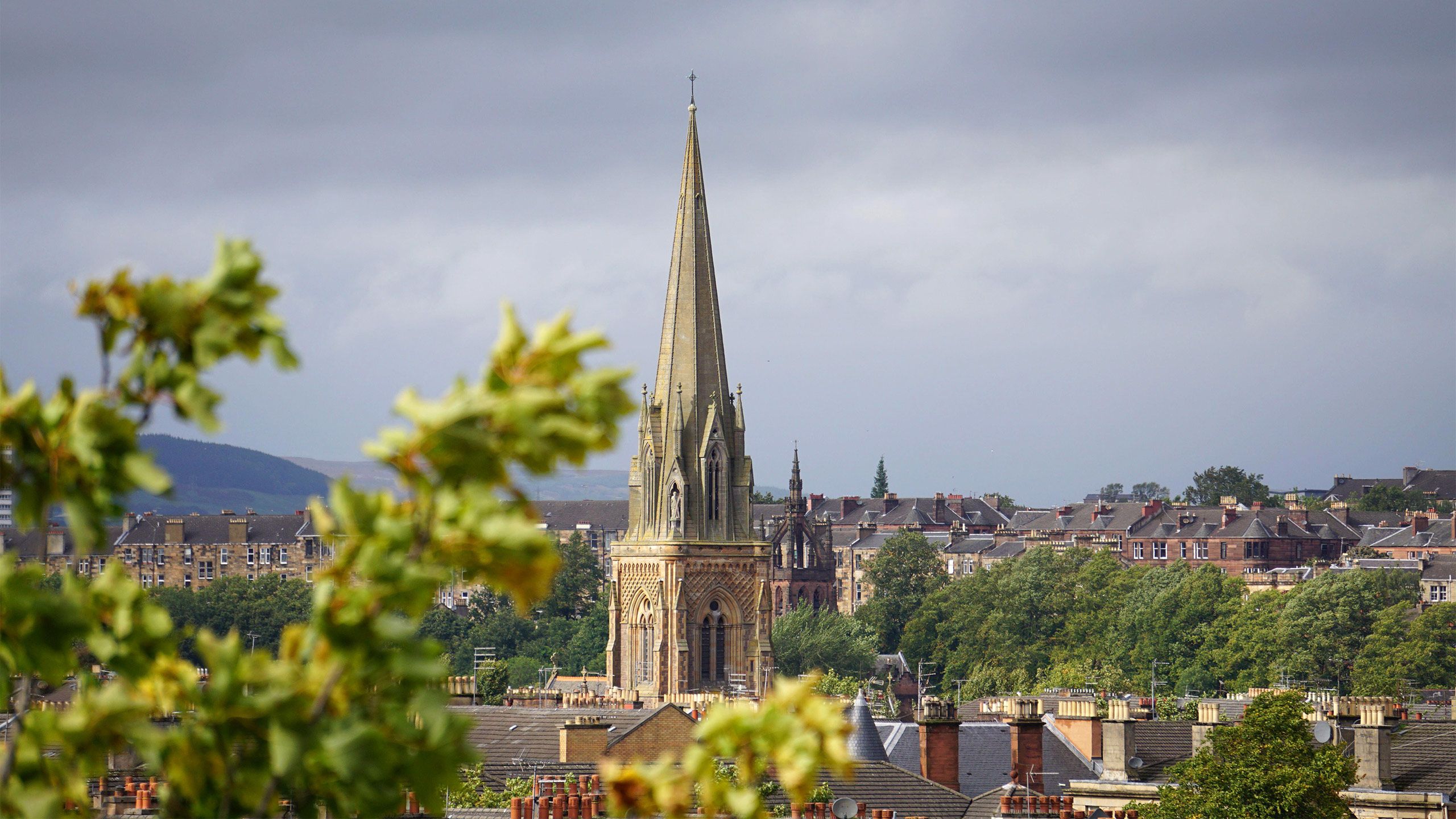
At 107 Niddrie Road in the south of the city, one of the red sandstone-fronted tenements, so emblematic of Glasgow, is being ripped apart and put together again.
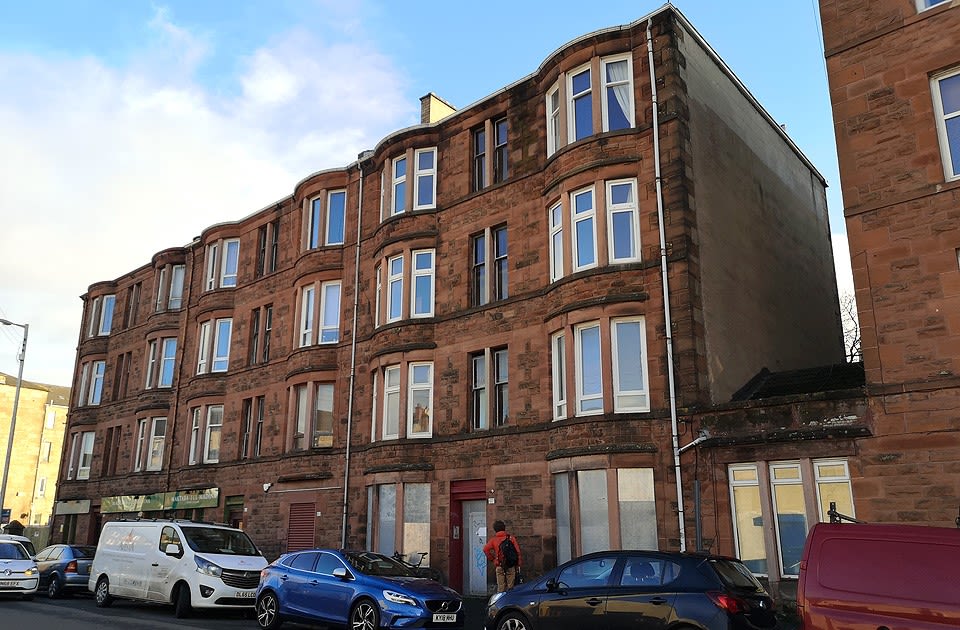
JOHN GILBERT ARCHITECTS
JOHN GILBERT ARCHITECTS
These traditional multi-occupancy homes, built over a century ago to cope with a burgeoning workforce, are a problem for a city trying to reduce its carbon footprint.
About a quarter of the city's housing stock was built before 1919. Bringing it up to modern insulation standards will be tough - but Niddrie Road is an experiment in how it might be done.
With all eight flats in the block vacant, Southside Housing Association is trying to reach the ambitious EnerPHit standard for retrofitting older properties.
“It’s a massive balancing act of energy efficiency versus heritage,” says Drew Carr of John Gilbert Architects.
When the tenants move back next year, monthly bills could be as low as £10 to £15.
The sandstone front is retained by stripping back the inside walls to the brickwork and fitting insulation internally. At the side and rear, the outside walls are clad with non-combustible mineral wool.
Site manager Gerry Hughes has been insulating buildings for 30 years, but this work is very different.
“We will learn from this, we will take it away, we’re not doing the normal work. There’s wee bits and pieces in it you think - my God, this could work somewhere else.”
Making an old building airtight creates new problems with condensation and mould, so mechanical ventilation and moisture reduction are also part of the work.
Suitcase-sized units above the bathroom ceilings suck out warm moist air, extracting heat and using it to warm fresh air that is piped to the living spaces.
Heating is a mix of air source heat pumps and high efficiency gas boilers – but the flats are so well insulated little energy is required.
Another retrofit on three 1960s tower blocks in the north of the city has already cut bills in an area where fuel poverty is a huge issue.

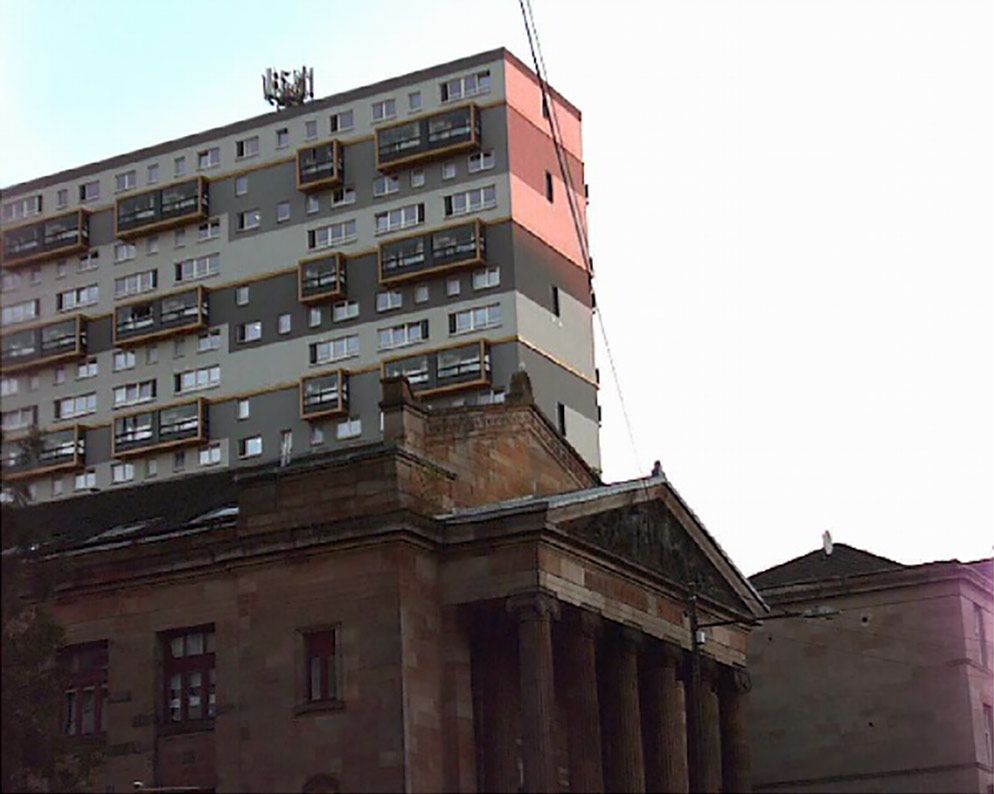
Item 1 of 2

THERMAL IMAGE UK
THERMAL IMAGE UK



Item 1 of 2

THERMAL IMAGE UK
THERMAL IMAGE UK

Cedar Court has been wrapped in mineral wool, the windows are triple glazed and – at the tenants’ request – balconies are now enclosed to create “winter gardens”. The predominant blue colour in thermal images shows very little heat is being lost.
Joanne Wong is among 1,300 residents who have benefitted from the project commissioned by Queen’s Cross Housing Association.
“The biggest difference is that inside the flat it’s now warm,” she says.

Another tenant, George McGavigan, says: “To tell you the truth my heating’s never on because everything’s boxed in, everything’s contained – and they’ve the got the ventilation system.
“You only need to open your windows to wash them.”
These projects show what can be done - but at a price. The investment at Cedar Court worked out at more than £48,000 per flat, while unit costs for the tenement retrofit will be higher.
There are also practical difficulties in rolling out such measures to buildings that are a mix of owner occupiers and tenants. And perhaps the biggest question of all - who will pay?
Heat from the river

A few miles downriver from Glasgow, another Titan crane is reflected in the tinted glass of a high-tech energy centre.
It stands at Clydebank, on the site of the famous John Brown Shipyard where some of the greatest ships of their day were built.



Item 1 of 3



Now the river that gave life to these carbon heavy industries is helping decarbonise the new developments that have taken their place.
Two huge heat pumps are extracting enough residual heat from the Clyde to supply water at 75C through insulated underground pipes to nearby buildings.
A care home and buildings owned by West Dunbartonshire Council are already heated in this way, while in future 1,000 homes will be added to the network.
Instead of their own boiler each property has an “interface unit”, similar in size, which controls heat and measures how much is used.
“It’s going to be cheaper in the long run,” says John Anderson, who runs the council’s leisure services.
“We’re shielded from increases in gas prices, we don’t have the maintenance costs of boilers – and of course, it’s better for the environment.”
District heating schemes are not a new concept. Copenhagen started building its network in the 1980s, and it now serves 97% of the city, mainly using waste heat from electricity production.
It's one reason the Danish capital is on track to become the world's first carbon neutral city, perhaps as early as 2025.
Glasgow hopes to create similar networks. Plans are being made to use heat from the city’s recycling centre in Polmadie. A study has considered a site in the Gorbals for extracting heat from the river.
But these projects are still at an early stage and would require massive investment – both public and private. The potential is huge but so too are the obstacles.
Electric wheels

Less than a mile away from the Niddrie Road tenement project, the UK's biggest bus depot is being transformed into the country's biggest electric vehicle charging hub.
The Caledonia depot will eventually have capacity to charge 300 fully electric buses.
Glasgow’s biggest bus operator, First, has 24 of them already and 150 are due to be in service by March 2023.
Driver James Lillis started work on the buses in Govan in the 1970s, a time when thousands of workers would still spill out of the shipyard gates at the end of a shift.

“Years ago you went into some of the depots in the morning and it was full of fumes. You could hardly see in front of you,” he recalls.
A four-hour charge can now keep a bus working all day.
“You’ve not got all the fumes, you’ve not got any of the noise, the gear changes, anything like that. It’s just so smooth, it’s very, very good for the environment.”
Transport accounts for a third of Glasgow's carbon emissions. Next year the council takes delivery of 19 hydrogen-powered bin lorries, part of a trial to find out if they can replace diesel trucks.
But switching to electric or hydrogen vehicles, which still have some carbon cost in their manufacture, can’t be the whole solution.
This city of 635,000 people has 260,000 registered vehicles
Plans have been drawn up for an extra 160 miles (257km) of cycle lanes while a new “roof garden” could be built over the M8 motorway to reconnect a city which was cut in two in the 1960s.
Success ultimately depends on persuading Glaswegians to change the way they get around.
The world is watching
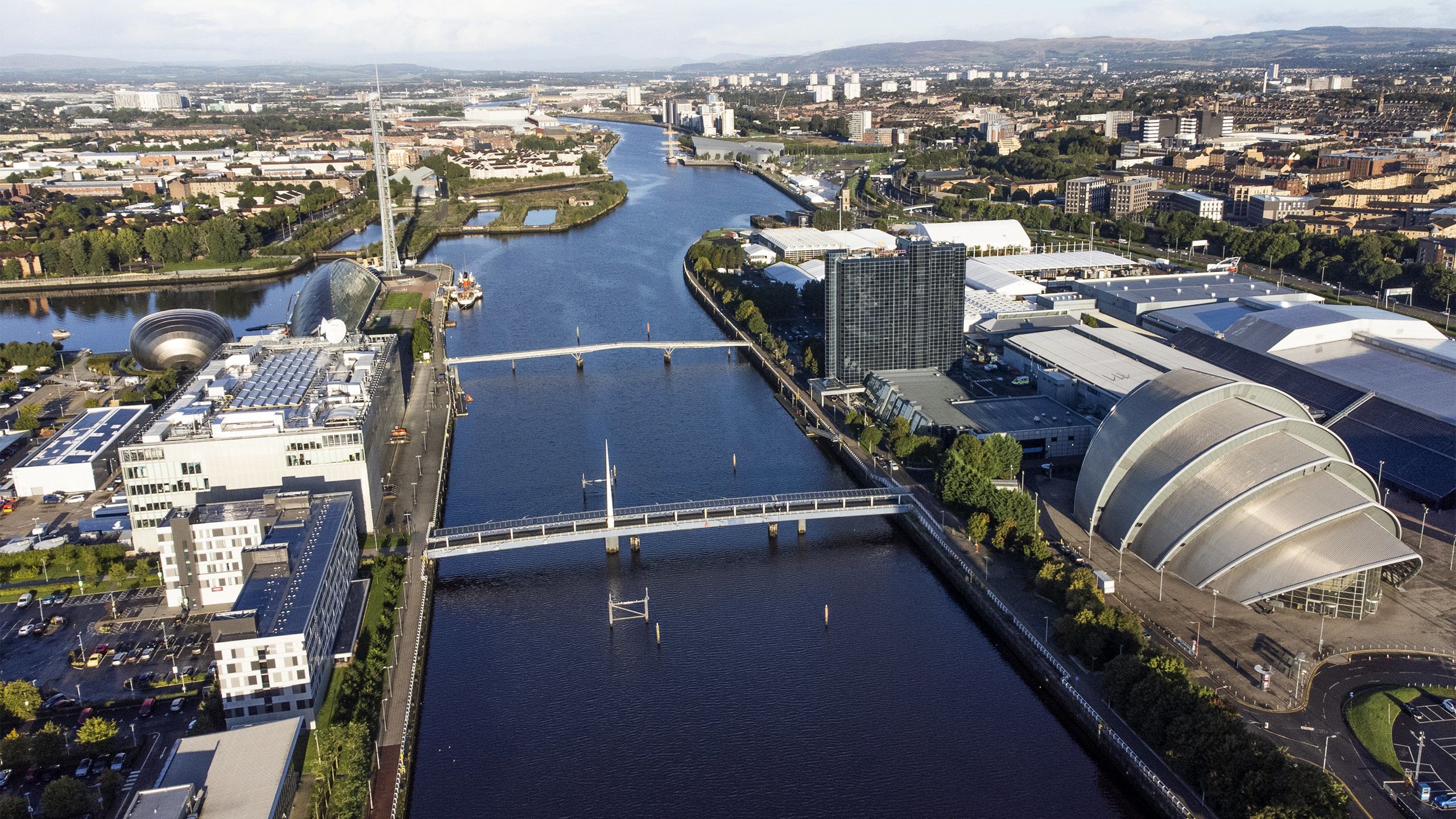
For Scotland, climate change means hotter, drier summers but with more sudden downpours. Winters will be milder and wetter with more frequent extreme weather events.


Item 1 of 2




Item 1 of 2


Three years ago the Glasgow Science Centre, one of the city’s top visitor attractions, was “melting” as a record June temperature of 31.9C caused its waterproof membrane to drip down its sides.
This summer saw the warmest average temperatures in Glasgow since records began in 1884 - but for residents of the Drumchapel area it also saw flooding as downpours overwhelmed the drains.

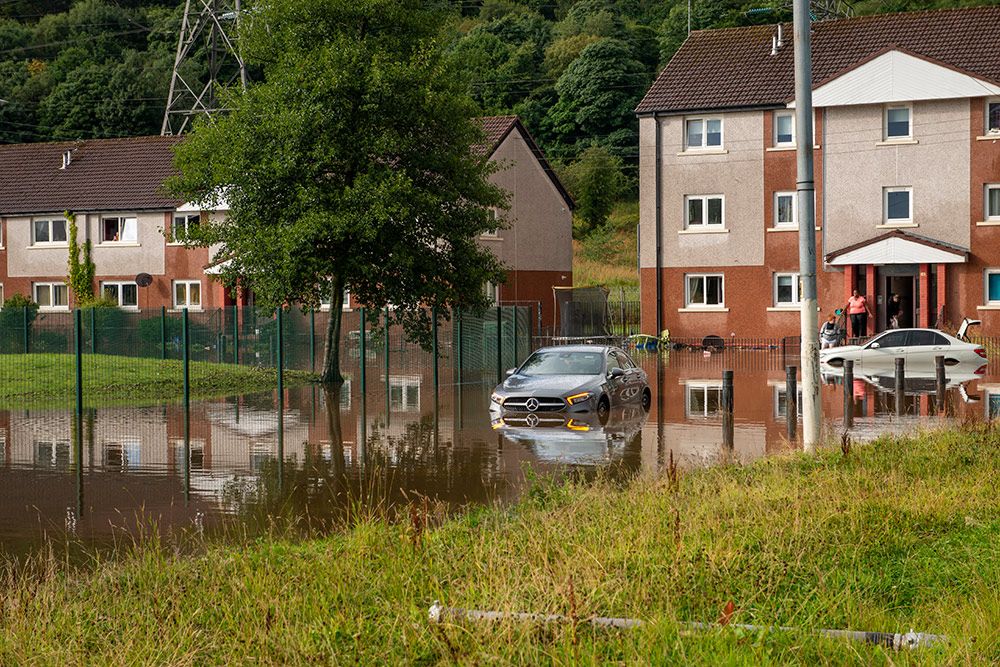
Item 1 of 2

ANNA MAJEWSKA
ANNA MAJEWSKA

ANNA MAJEWSKA
ANNA MAJEWSKA


Item 1 of 2

ANNA MAJEWSKA
ANNA MAJEWSKA

ANNA MAJEWSKA
ANNA MAJEWSKA
In the coming decades, the city will have to invest millions in “resilience” simply to protect its buildings and infrastructure from conditions they were never designed for.
Some 45,000 homes and businesses in Glasgow already face some risk of flooding. The council believes that figure could rise to almost 60,000 by the 2080s.
The Clyde is tidal as it passes through most of Glasgow. A weir in the east of the city regulates water flow, but below that point the river’s level often varies by 13ft (4m) or more twice each day.
Rising sea levels combined with a storm surge could see much of the river corridor – including the COP26 venue itself - at “medium risk” of flooding, according to forecasting authority Sepa.
Increased rainfall could also mean more land is at risk of river flooding.
Areas at risk of surface water flooding are already widespread – and set to increase.
Glasgow is not the only city to declare a climate emergency and target 2030 as a date for carbon neutrality, but it’s a big ambition. Is it achievable?
Net zero carbon means that the amount of C02 produced is balanced by the amount being removed, for instance by tree planting or carbon capture.
But these were the “easy wins” largely driven by the decarbonisation of the electricity network as coal-fired power stations were shut and renewables came on stream.
Aside from a project to plant 22,000 trees, there’s little detail yet on what other measures Glasgow could take to counterbalance the carbon emissions still remaining at the end of the decade.
What is certain is that the next stage in the journey toward carbon neutrality will require far greater upheaval and billions of pounds of investment.
The city’s leaders are promising a “just transition”, making sure the burden doesn’t fall disproportionately on the poorest citizens.
Public money may be targeted at the least well-off, but governments have already made it clear the public purse can’t pay for it all.
This once industrial city has a route map to a greener future - but whether it happens depends to a great extent on decisions taken at national and international level.
“One of the challenges we face in reaching net-zero carbon is the investment required, which is at a level never seen before in local government,” says the council's sustainability and carbon reduction convener Anna Richardson.
Fifty years have passed since the trade unionist Jimmy Reid addressed workers who were staging a “work-in” in a bid to save thousands of jobs at Upper Clyde Shipbuilders.
In an appeal for discipline and dignity, he famously told them: “There will be no hooliganism, there will be no vandalism, there will be no bevvying, because the world is watching us.”
The work-in won the shipyards a reprieve but today almost all of them are gone.
The Glasgow hosting COP26 is a very different city and the world is watching once again.
Credits
Writer: Calum Watson
Editor: Graeme Esson
Graphics: Debie Loizou and Lilly Huynh
Video: Marc Ellison
Pictures: Historic Environment Scotland, George Wyllie Estate, University of Glasgow Library, Stewart Kerr, HES Archives, Anna Majewska, Getty Images, PA Images, Alamy
Producer: James Percy
Published: 29 October 2021
More Long Reads

The lost tablet and the secret documents

The memory hunters
